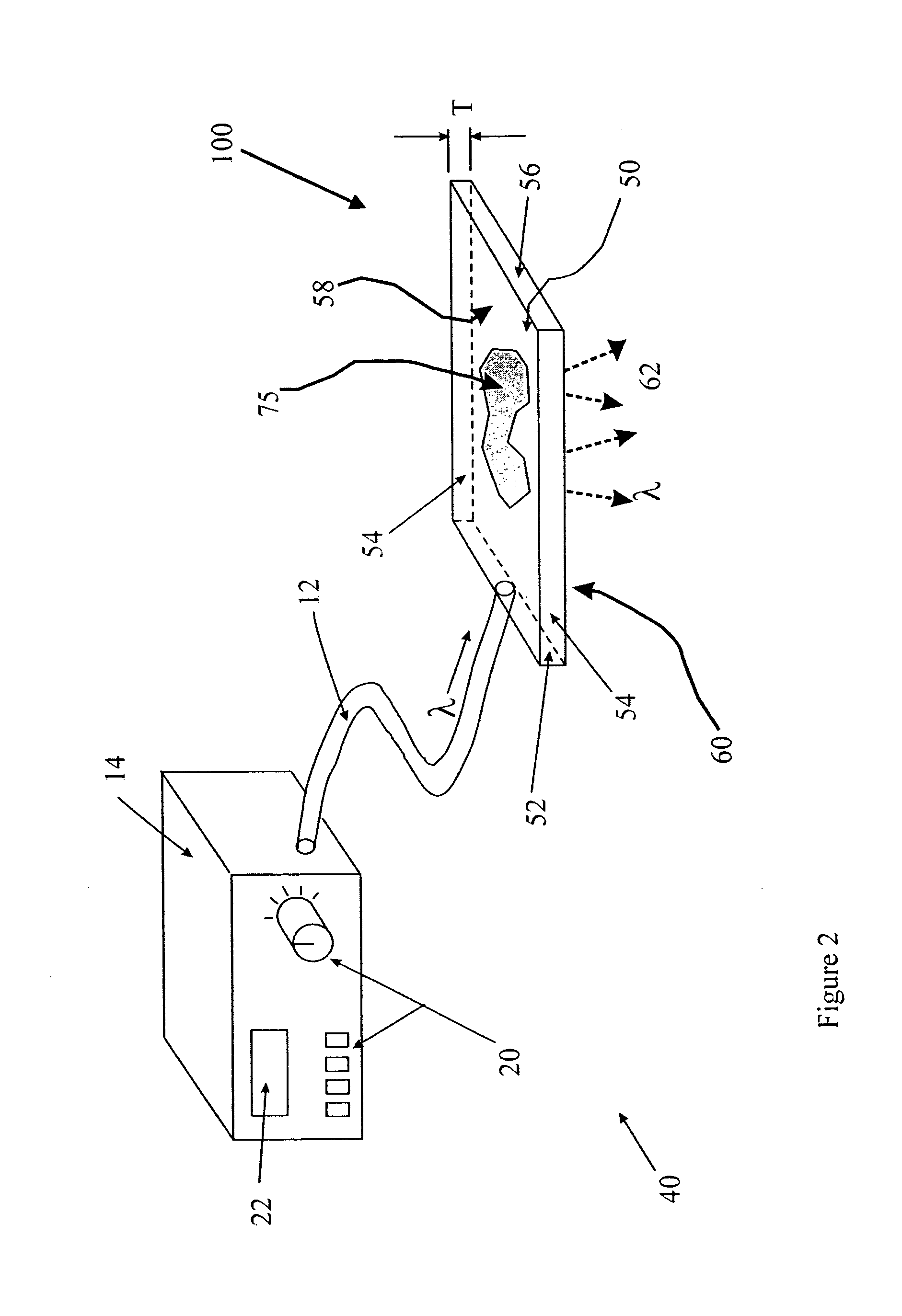Light therapy device
a light therapy and device technology, applied in light therapy, radiation therapy, therapy, etc., can solve the problems of device not conforming to the shape of the tissue being treated, ineffective doses and inhibitory doses, and bandages not enabling the use of specific illumination optical wavelengths
- Summary
- Abstract
- Description
- Claims
- Application Information
AI Technical Summary
Benefits of technology
Problems solved by technology
Method used
Image
Examples
Embodiment Construction
[0037] The following is a detailed description of the preferred embodiments of the invention, reference being made to the drawings in which the same reference numerals identify the same elements of structure in each of the several figures.
[0038] The present invention provides a flexible light therapy device having a plurality of applications, including but not limited to, the treatment of seasonal affective disorder, psoriasis, acne, diabetic skin ulcers, pressure ulcers, and hyperbilirubinemia common in newborn infants. The present invention delivers light energy by means of a flexible member that can be placed in contact with the skin of a patient. The present invention comprises a light guide bandage, in which light is input coupled into the light guide, trapped within by reflection, and emitted in accordance with a light extraction layer. The light extraction layer can be custom applied, such that the light is emitted nominally onto the area requiring treatment but not elsewher...
PUM
 Login to View More
Login to View More Abstract
Description
Claims
Application Information
 Login to View More
Login to View More - R&D
- Intellectual Property
- Life Sciences
- Materials
- Tech Scout
- Unparalleled Data Quality
- Higher Quality Content
- 60% Fewer Hallucinations
Browse by: Latest US Patents, China's latest patents, Technical Efficacy Thesaurus, Application Domain, Technology Topic, Popular Technical Reports.
© 2025 PatSnap. All rights reserved.Legal|Privacy policy|Modern Slavery Act Transparency Statement|Sitemap|About US| Contact US: help@patsnap.com



